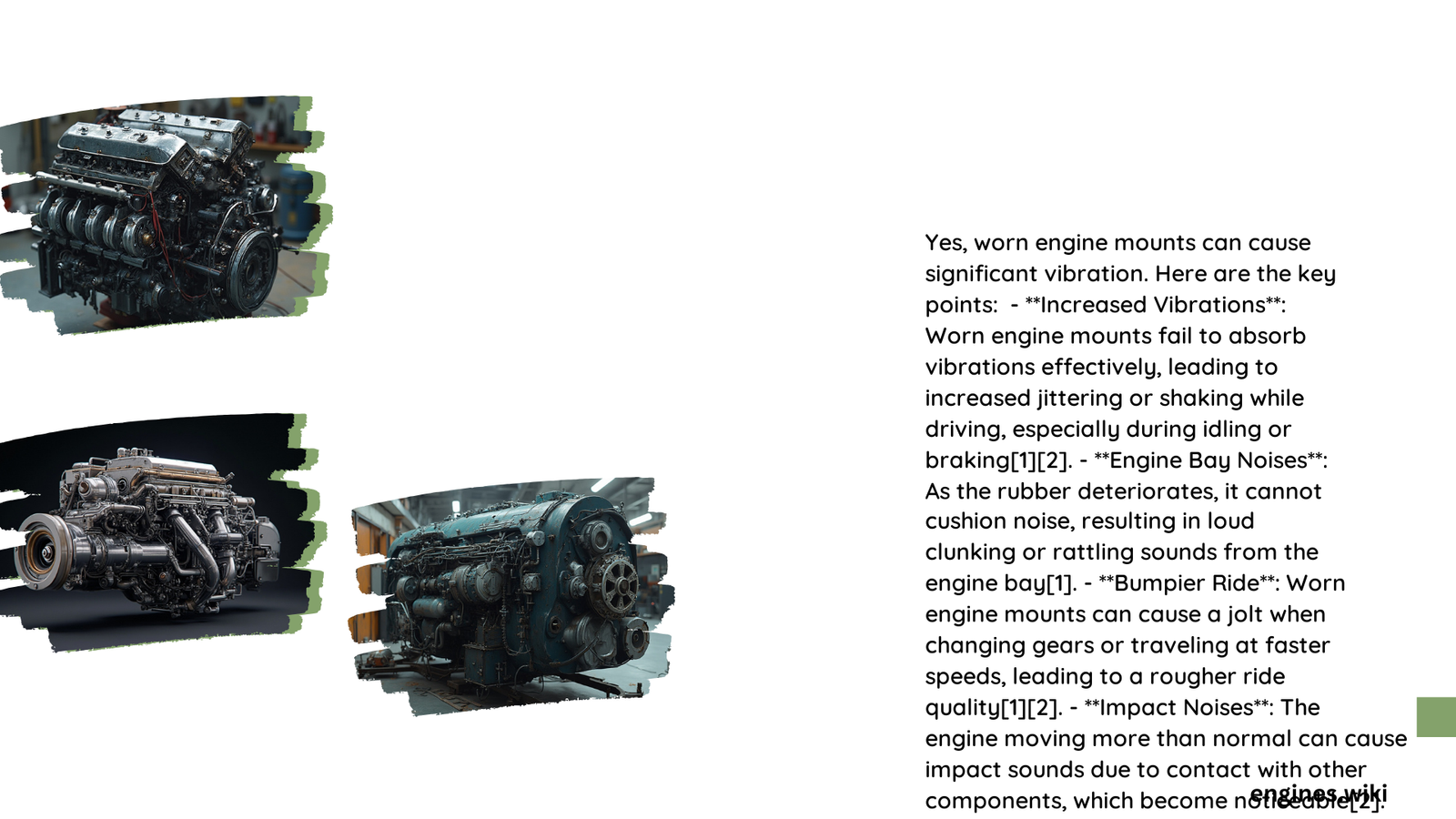Vehicle engine mounts play a critical role in isolating engine vibrations and maintaining smooth vehicle operation. When these mounts deteriorate, they can significantly impact your driving experience, causing noticeable vibrations, increased noise, and potential damage to surrounding vehicle components. Understanding the relationship between worn engine mounts and vehicle vibration is essential for proactive automotive maintenance and preventing costly repairs.
What Are Engine Mounts and Their Primary Function?
Engine mounts are rubber or hydraulic cushions that connect the engine to the vehicle’s chassis, serving multiple crucial purposes:
- Vibration Absorption: Reduce engine-generated vibrations
- Weight Distribution: Support engine’s weight
- Alignment Maintenance: Keep engine properly positioned
How Do Worn Engine Mounts Trigger Vehicle Vibrations?

Mechanical Breakdown of Vibration Transmission
When engine mounts deteriorate, they lose their ability to effectively dampen and isolate engine movements. This mechanical failure results in:
- Direct Vibration Transfer: Engine movements transmit directly to vehicle frame
- Increased Amplitude: Vibration intensity amplifies
- Frequency Matching: Vibrations synchronize with engine RPM
Quantifiable Vibration Impact
| Mount Condition | Vibration Reduction Efficiency | Potential Damage Risk |
|---|---|---|
| New Mounts | 90-95% | Low |
| Moderately Worn | 60-75% | Medium |
| Severely Worn | 20-40% | High |
What Specific Symptoms Indicate Worn Engine Mounts?
Physical Manifestations of Mount Deterioration
- Cabin Vibration: Noticeable shaking during acceleration
- Steering Wheel Tremors: Increased vibration intensity
- Engine Movement: Visible shifting during operation
- Unusual Noise: Clunking or thumping sounds
How to Diagnose Engine Mount Wear?
Professional Diagnostic Techniques
- Visual Inspection
- Check for visible cracks
- Examine rubber deterioration
-
Look for separation from mounting points
-
Vibration Analysis
- Use specialized frequency measurement tools
- Compare vibration patterns against manufacturer specifications
What Are Potential Consequences of Ignoring Worn Engine Mounts?
Long-Term Mechanical Risks
- Accelerated Component Wear
- Transmission Damage
- Increased Repair Costs
- Potential Safety Hazards
What Are Estimated Repair Costs?
Financial Considerations
- Engine Mount Replacement: $200 – $1,000
- Additional Potential Repairs: $500 – $3,000
- Average Total Repair Cost: $700 – $4,000
Expert Recommendations
Preventative Maintenance Strategies
- Regular Inspections: Every 30,000 miles
- Prompt Replacement: Upon detecting initial wear signs
- Professional Assessment: Annual comprehensive vehicle evaluation
Technical Insights
Worn engine mounts compromise vehicle dynamics by reducing natural vibration isolation. The rubber or hydraulic components degrade over time, losing elasticity and shock-absorption capabilities. This mechanical deterioration directly translates to increased vibration transmission through the vehicle’s structural components.
Conclusion
Understanding the intricate relationship between engine mounts and vehicle vibration empowers vehicle owners to take proactive maintenance steps, preventing potential long-term mechanical complications.
